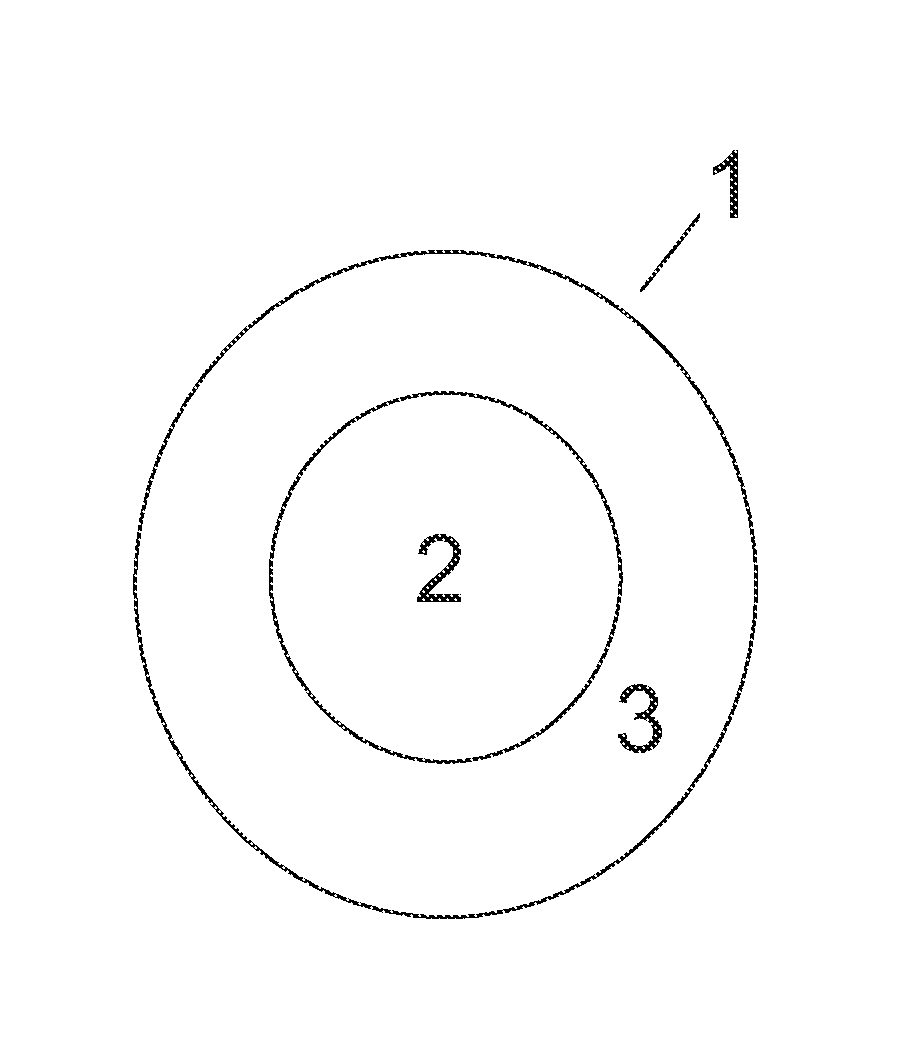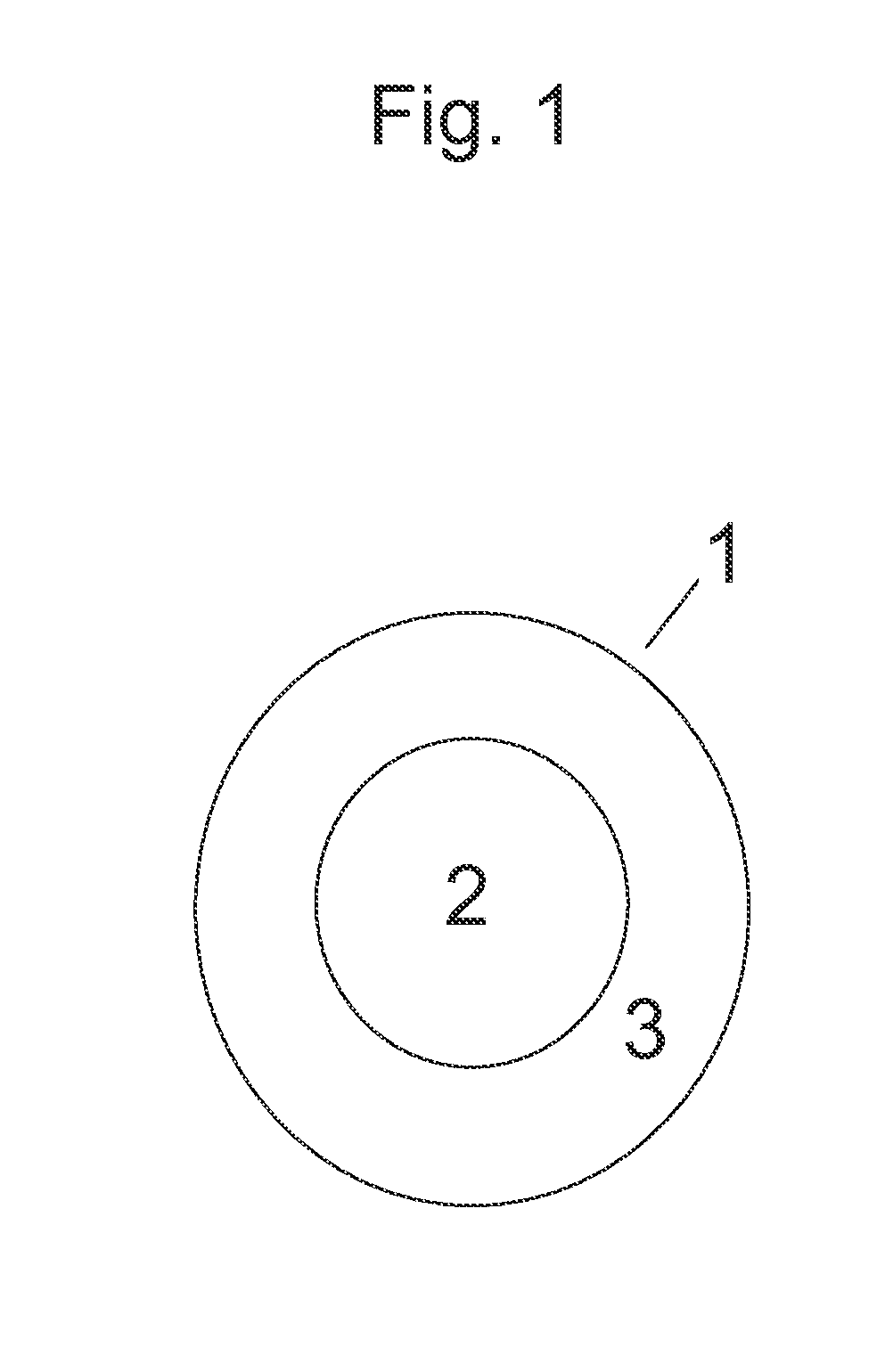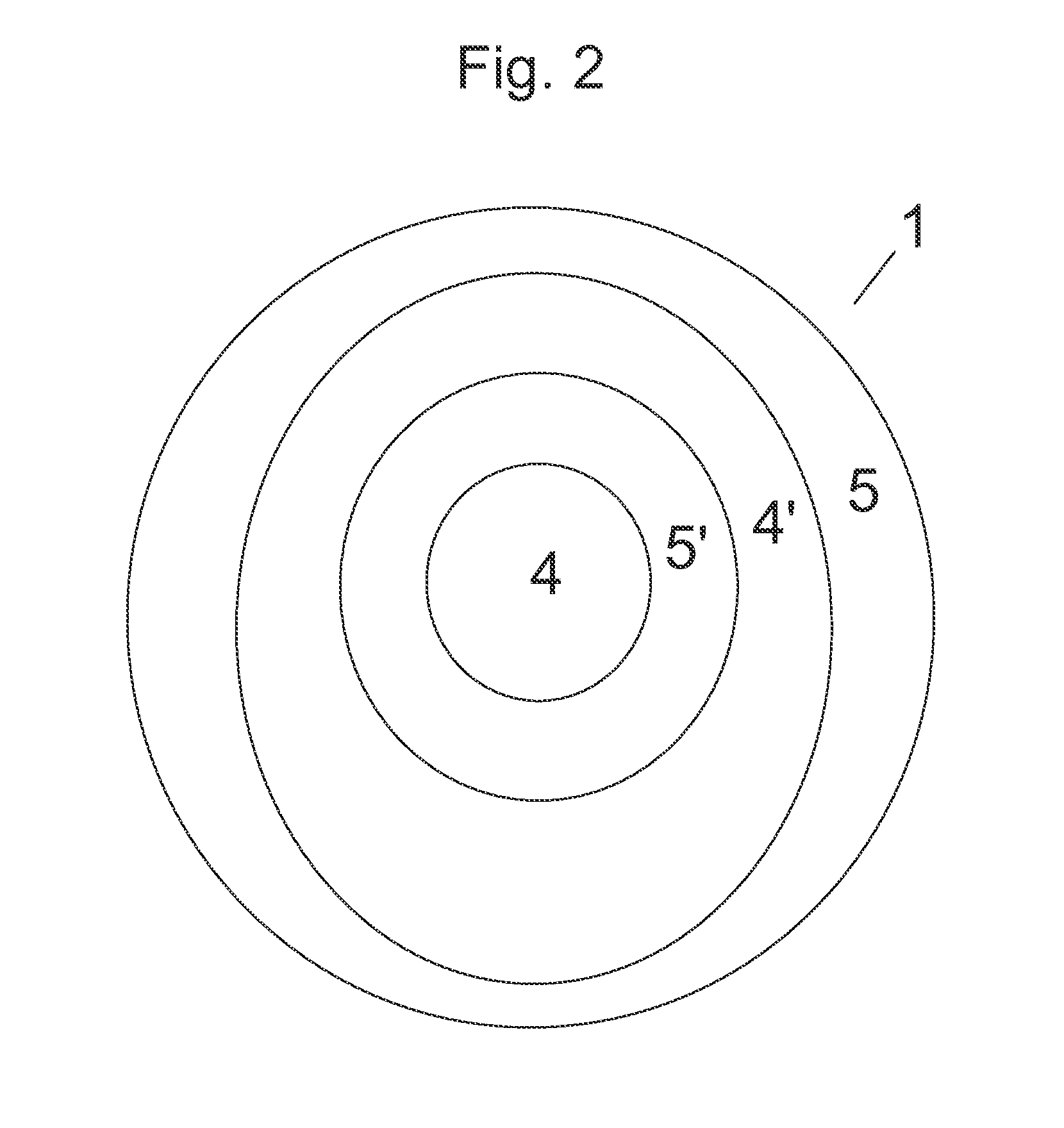Structured acrylate copolymer for use in multi-phase systems
a technology of acrylate and polymer, applied in the direction of detergent compounding agents, hair cosmetics, detergent compositions, etc., can solve the problems of compound health hazards, messy and time-consuming preparation of aqueous dispersions, and poor clarity, so as to achieve significant increases or decreases in viscosity, maintain smoothness, and improve clarity
- Summary
- Abstract
- Description
- Claims
- Application Information
AI Technical Summary
Benefits of technology
Problems solved by technology
Method used
Image
Examples
example 1
Two Stage Polymers
[0299]Into an agitator equipped first (feed) reactor containing 68.6 grams of deionized water (D.I.) and 6.67 grams of sodium lauryl sulfate (30% active in water wt. / wt.), 130.4 grams of ethyl acrylate and 69 grams of methacrylic acid are added under nitrogen atmosphere and mixed at 500 rpm to form a monomer emulsion. To an agitator equipped second reactor are added 1,340 grams of deionized water and 3.17 grams of sodium lauryl sulfate (30% active in water wt. / wt.). The contents of the second reactor are heated with mixing agitation (200 rpm) under a nitrogen atmosphere. When the contents of the second reactor reaches a temperature of approximately 84° C., 27.0 grams of ammonium persulfate solution (2.0% aqueous solution wt. / wt.) is injected into the heated surfactant solution. The monomer emulsion from the feed reactor is gradually metered (9.37 g / min.) into the second reactor over a period of about 30 minutes at a reaction temperature maintained at approximately ...
example 2
[0300]Into an agitator equipped first (feed) reactor containing 68.6 grams of deionized water (D.I.) and 6.67 grams of sodium lauryl sulfate (30% active in water wt. / wt.), 5.0 grams of Ethal SA 20, 130.4 grams of ethyl acrylate and 69 grams of methacrylic acid are added under nitrogen atmosphere and mixed at 500 rpm to form a monomer emulsion. To an agitator equipped second reactor are added 1340 grams of deionized water and 3.17 grams of sodium lauryl sulfate (30% active in water wt. / wt.). The contents of the second reactor are heated with mixing agitation (200 rpm) under a nitrogen atmosphere. When the contents of the second reactor reaches a temperature of approximately 84° C., 27.0 grams of an ammonium persulfate solution (2.0% aqueous solution wt. / wt.) is injected into the heated surfactant solution. The monomer emulsion from the feed reactor is gradually metered at a feed rate of 1.87 g / min. into the second reactor over a period of 30 minutes at a reaction temperature maintain...
example c-1 (comparative)
[0302]An acrylic based emulsion polymer having a crosslinked core and linear shell identified as polymer C-1 is polymerized from the components set forth in Table 1. The emulsion polymerization procedure set forth in Example 2 was followed except that a crosslinked core polymer is synthesized in the first stage reaction followed by the synthesis of a linear polymer shell. In this example, 10% of the monomer emulsion prepared in the feed reactor as set forth in Example 2 is metered into the second reactor over a time period of 6 minutes at a temperature maintained at 85° C. and at a feed rate of 24 ml / min. 3.0 grams of a crosslinking monomer (TMPTA) is then added to the second reactor and mixed for 10 minutes to obtain homogeneous monomer emulsion. 27.0 grams of ammonium persulfate (2.0% aqueous solution wt. / wt.) is injected into the reactor with agitation and polymerized to form a crosslinked core particle. After a 10 minute hold, the second stage comonomer emulsion (except the cros...
PUM
| Property | Measurement | Unit |
|---|---|---|
| pH | aaaaa | aaaaa |
| weight | aaaaa | aaaaa |
| amphoteric | aaaaa | aaaaa |
Abstract
Description
Claims
Application Information
 Login to View More
Login to View More - R&D
- Intellectual Property
- Life Sciences
- Materials
- Tech Scout
- Unparalleled Data Quality
- Higher Quality Content
- 60% Fewer Hallucinations
Browse by: Latest US Patents, China's latest patents, Technical Efficacy Thesaurus, Application Domain, Technology Topic, Popular Technical Reports.
© 2025 PatSnap. All rights reserved.Legal|Privacy policy|Modern Slavery Act Transparency Statement|Sitemap|About US| Contact US: help@patsnap.com



